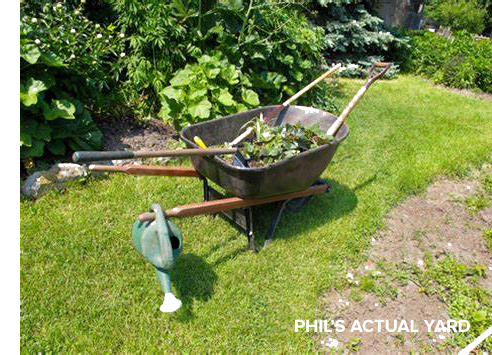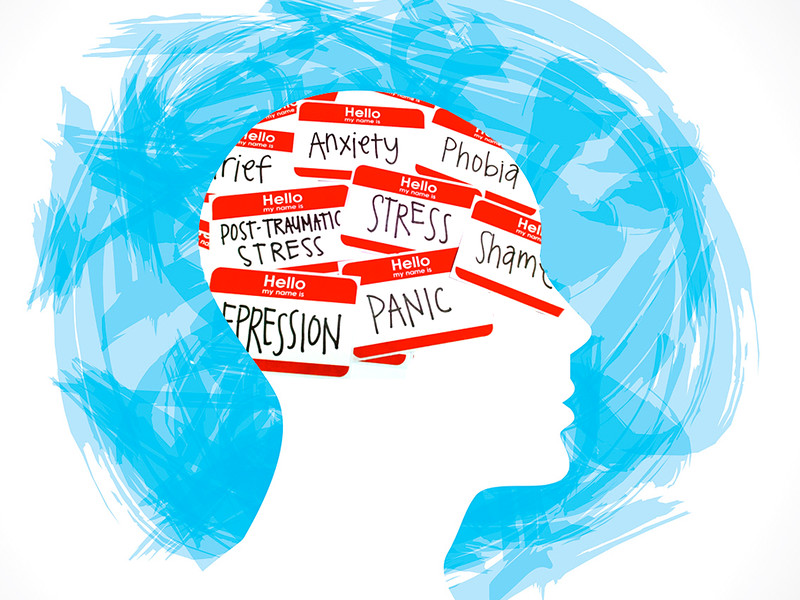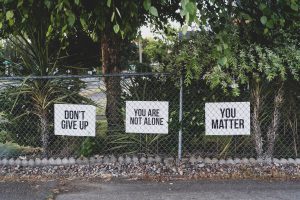 My yard is green… finally.. and if you look close enough (not too close), the grass is a particular shade of green deserving of an unfamiliar sense of pride, if only for the fleeting of moments.
My yard is green… finally.. and if you look close enough (not too close), the grass is a particular shade of green deserving of an unfamiliar sense of pride, if only for the fleeting of moments.
You see, my thumbs are fat, not green… And the only plant I can cultivate are the ones that rhyme with “schmeeds” …
But times are different and as we back into our 6th week of “Operation: WFH”, I am finding myself spending more time in the yard – weeding, trimming and more weeding. It is a bit of a paradox, really, in that while I’ve always enjoyed being outside, I’ve often just pretended to know how to landscape, possessing a reality of truth in knowing that I really just suck at it. But we are in surreal times and evidently surreal times result in greener grass.
COVID-19 sucks eggs, but if it has done anything, it has shimmered the spotlight on the consequential realities of our daily lives… the good ones are obvious, cleaner air, less commutes and a donut shaped number of sports teams who disappoint us. The personal ones, like spending quality time with family and actually being home in time for dinner are hopefully a few of the long-term benefits that will stick when we safely land on the launching pad of the new normal.
We all are dealing differently and its comforting to know we are simply trying our best to provide and share with each other the “what we think” in the “where we are” for the “whenever it happens” scenarios.
When it comes to the workplace, the validity of Re-entry-solutions like the renaissance of the private office, touchless elevator controls and painting directional arrows on the floor might all help a smidge, but let us also agree that it will not bend the curve enough to shed light on the stark existence of the “true” reality. That physical improvements to workspace are mere droplets in the Atlantic to the upcoming curve long rising before the thought about a “flattening” of anything became the adopted global rally cry.
 Enter – The topic of Mental Health……
Enter – The topic of Mental Health……
To put it another way – this is the biggest workplace change management experiment in history. – ever. – and will assuredly trigger a storm of ramifications that will long be felt after the curve is flattened and the fresh new paint of any new “re-entry” design solution is dry. In credit, the design industry had already begun to acknowledge that emotional wellness is critical to the healthy environment—that MENTAL health IS HEALTH.
In Pre-COVID, Workplace strategy began addressing the “humanizing” of the workplace. A noticeable shift was reflected in the relevant expertise of those attending any of the kick-off meetings, shifting from CEO’s and CFO’s to Human Resources and Culture specialists. HR was leading the charge and stirred the discussions about not only a Workplace Strategy, but THEIR workplace strategy. This began to underline that the uniqueness of any emotional and mental health condition is real.
“The conversation and goals dramatically shifted when human resources lead the charge of any discussion about workplace strategy.” —Debra Breslow, Meyer’s Corporate Interiors Practice Leader and Workplace Strategist.
The shift seems to have been working, with terms like “culture”, “community” and “wellbeing” beginning to populate the platform of daily workplace dialogue.
Fast forward a pandemic, and every organization must now make mental health a priority to support the success of any business-led continuity plan, or risk a cliff-sized nosedive of employee health and productivity. Just as the pandemic has forced the adoption of remote working technology, it will also force us to reckon with the employee experience strategy in total, fully harmonizing both emotional behavior and physical health.
“It comes down to culture and community. This is what keeps us connected – and maintaining the unplanned collisions that provide the context – the impromptu-ness is often the messier part of the design process – but it is usually the most important, and it is impossible to be replicated on a formatted zoom call” added Breslow.
The CDC defines Mental Health below:
Mental health includes our emotional, psychological, and social well-being. It affects how we think, feel, and act. It also helps determine how we handle stress, relate to others, and make healthy choices. Mental health is important at every stage of life, from childhood and adolescence through adulthood.
Although the terms are often used interchangeably, poor mental health and mental illness are not the same things. A person can experience poor mental health and not be diagnosed with a mental illness. Likewise, a person diagnosed with a mental illness can experience periods of physical, mental, and social well-being.
No doubt mental health can and should take the lead-off position, focused on center stage without any prior discussions regarding the physical nature of office space. This is not a new topic, but it certainly should be a re-focused topic.

Less than a year ago, the WHO named “burnout” a workplace syndrome which costs $125 Billion per year. Workplace emotional wellbeing and behavior health were already challenging prior to the pandemic. It is estimated that nearly 18% of the population, or 40 million adults struggled with some form of anxiety disorder. The evidence linking the workplace with mental health and associated increased productivity losses is mounting at an alarming rate. There is a need to better understand organizational practices to reduce job stress so that viable solutions can be developed to effectively target these risk factors in the workplace.
The spreadsheet part of this reflects this even louder—increased health care costs and lost productivity indirectly contribute to the severity of other costly conditions such as heart disease, diabetes and stroke.
Here is the point—Isolation is real—loneliness is scary real—and we need to add that to our evolving workplace messaging. We must acknowledge that THIS isn’t easy. That staying at home can be brutal and life may not get any easier leaving it. The current circumstances provide a petri dish to the pitfalls of all that engulfs the ecosystem of Mental Health.
Protocol Considerations
At Meyer—we are starting to develop protocols to assist our clients with the emotional side of workplace. Mike Stanczak, VP of Operations at Meyer has developed an outline to assist our clients with the anticipated emotional side of workplace.
- Tolerance identification
- Suggestions to talk to your employees about their tolerance levels and feelings on social distancing, personal safety, comfort and use of PPE’s—understanding this can shift over time.
- How to share received information (from employees) to foster a sense of communal safety and trust in the workplace
- Management awareness
- Advising managers to be mindful, sensitive to and responsive of changes in behavior, things to watch for, suggestions to offer
- Identifying ways employees may manifest and exhibit stress in the workplace and how managers can approach their employees to discuss these behaviors
- RAPID Psychological First Aid?
- Fostering communication for productivity
- Suggestions for maximizing the benefit of virtual and remote tools, and balancing these effectively with in-person processes
- Recommendations for Agenda/Outline for virtual meetings success
- Branding exercise – Design in the virtualized platform
- Personality and emotional state evaluations
- Encourage employees to “check-in” with themselves to identify ways in which their anxiety, stress, and tolerances may change over time.
- Identifying and providing access to tools to support this action: Myer Briggs, ADAA screening tools, etc.
- Recognizing that personality, stress management techniques and individual experiences with the pandemic will all impact an employees ability to recover and re-enter more productively
- Conflict resolution
- How to develop strategies and address issues that employers know are there (related to different personalities and tolerances) even before people re-enter the office environment
“These are qualities that make us human (something that many are not experiencing with this separation / present situation). Layout, desk spacing and furniture componentry will always change and are subjective”. Stanczak added.
Things like this spiral, stressors build up, and the “what ifs” will melt into the “what nows”. The real danger is believing we might have figured this out when the ribbons are cut on re-entry day. And we very well could continue to go thru a full baseball season or 4 without realizing the real danger of the emotional scars that will continue to develop within the human spirit.
Those emotions could feed into the way we react to future situations and resurface even when we think we have recovered. – For instance, it will be hard to imagine a conversation that won’t end without a conscious glob of sanitizer or the “judgmental wince” in reaction to a whooping sound of the next audible cough. The sentiment we are experiencing now, will become part of the “emotional backbone” for how workplace culture will be defined for the foreseeable future.
We don’t want social distancing to become workplace distancing, and if we don’t get ahead of the mental and emotional health crisis with the same levity of how we are maintaining social distancing, then 6 feet will feel like 6 miles. The crater-sized chasm will assuredly gnaw away any sense of unity and culture identity—and the fallout will be felt long after the Lysol is sprayed or the grass turns brown again.
#goawaycovid
For additional information: